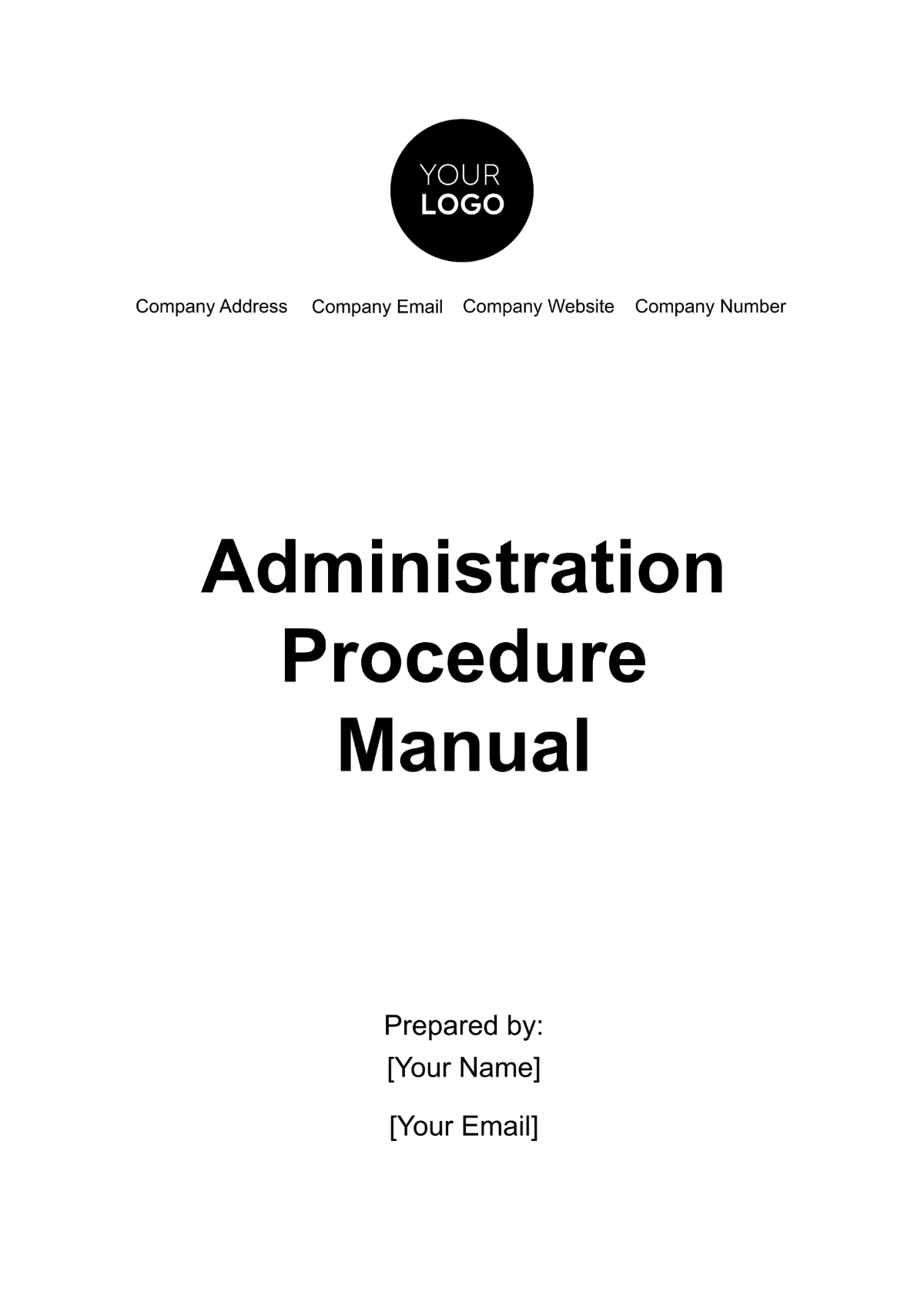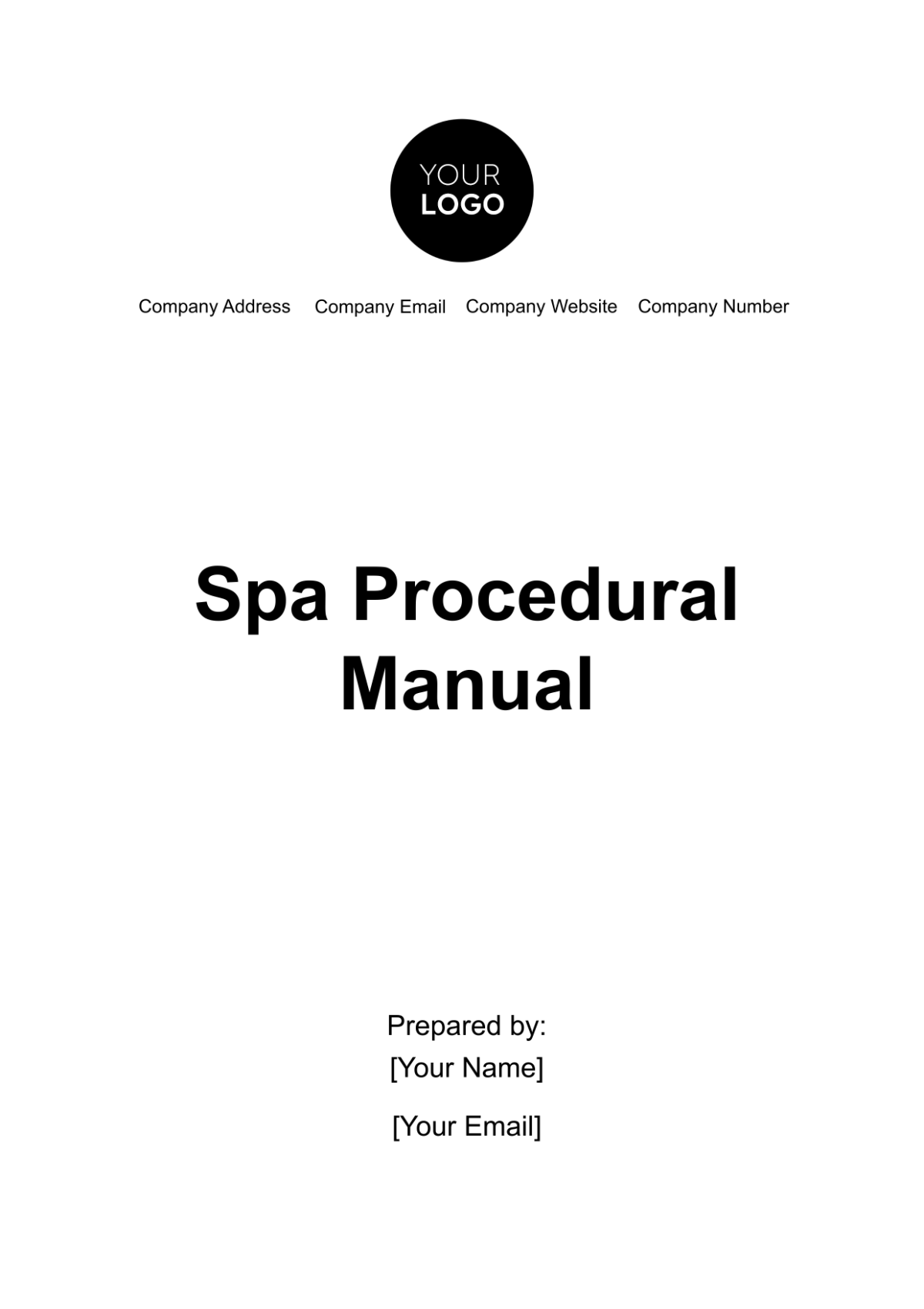Accounts Policies & Procedures Manual
1. Introduction
1.1 Purpose of the Manual
This Accounts Policies & Procedures Manual aims to establish a standardized framework for managing the financial processes at [Your Company Name]. The manual is a vital tool for ensuring accountability, transparency, and compliance with both internal guidelines and external regulatory requirements. It will serve as a point of reference for all staff involved in financial transactions or decision-making.
1.2 Scope
This manual applies to all financial transactions and accounting practices at [Your Company Name]. It encompasses guidelines on financial reporting, revenue and expenditure management, payroll processing, asset management, internal controls, compliance, and audit procedures. It is designed to be comprehensive but not exhaustive, as it must adapt to evolving business and regulatory landscapes.
1.3 Responsibility
Responsibility for the implementation and adherence to these policies and procedures lies with all employees, especially those within the finance and accounting departments. Department heads are responsible for ensuring their teams are informed and compliant. The Chief Financial Officer (CFO) has the ultimate responsibility for maintaining the integrity of the financial processes and reports.
2. General Accounting Policies
2.1 Accounting Principles
[Your Company Name] strictly adheres to Generally Accepted Accounting Principles (GAAP) in all financial transactions. GAAP provides a standardized framework for recording, reporting, and interpreting financial data, ensuring consistency and comparability.
2.2 Fiscal Year
The fiscal year of [Your Company Name] commences on January 1st and concludes on December 31st. This twelve-month period is chosen to align with external reporting requirements and facilitate annual financial analysis.
2.3 Chart of Accounts
A well-organized Chart of Accounts serves as the foundation of our accounting system. It is a systematic list of accounts used to categorize financial transactions. Each account is assigned a unique number and name. For example:
Account Number | Account Name | Description |
|---|---|---|
1000 | Cash on Hand | Cash available in office |
1001 | Bank Account | Company's main bank account |
The Chart of Accounts allows for precise tracking of financial activities and facilitates financial reporting.
2.4 Documentation and Record Keeping
Accurate documentation and record keeping are fundamental to our financial operations. All financial transactions, whether income or expenditure, must be supported by appropriate documentation, including invoices, receipts, contracts, and purchase orders. These records must be meticulously maintained for a minimum of seven years to comply with legal and regulatory requirements.
3. Financial Reporting
3.1 Monthly Reports
To provide stakeholders with timely financial insights, [Your Company Name] prepares monthly financial reports. These reports include the balance sheet, income statement, and cash flow statement. The Chief Financial Officer (CFO) reviews these reports, and they are presented to the management team for discussion and decision-making.
3.2 Annual Reports
At the conclusion of each fiscal year, [Your Company Name] compiles an annual report that consolidates the financial activities of the entire year. This comprehensive report offers an in-depth analysis of the company's financial position, performance, and cash flow. Additionally, it includes a summary of significant events and accomplishments throughout the year. The annual report undergoes an external audit by a reputable auditing firm to ensure accuracy and compliance with regulatory standards.
The external audit is an essential step in maintaining transparency and credibility in financial reporting, reassuring shareholders, investors, and regulatory authorities.
4. Revenue Recognition
4.1 Policy
Revenue recognition is a critical aspect of financial accounting at [Your Company Name]. We adhere to the accrual basis of accounting, recognizing revenue when it is earned, regardless of when the payment is received. This principle aligns with GAAP and provides a more accurate reflection of our financial performance.
4.2 Sale of Goods
For revenue generated from the sale of goods, [Your Company Name] recognizes it when significant risks and rewards of ownership have been transferred to the buyer. This typically occurs when the goods are delivered, and the customer gains control over them.
4.3 Services Rendered
Revenue from services rendered is recognized when the service has been completed and delivered to the client. This means that revenue is recognized as the company fulfills its obligations to the customer, providing a clear picture of the value delivered.
Accurate revenue recognition is vital for financial transparency and compliance, ensuring that financial statements reflect the true economic reality of our business activities.
5. Expenditure Processing
5.1 Authorization of Expenditures
The prudent management of expenditures begins with proper authorization. All expenditures, whether operational or capital, must be authorized by the department head responsible for the expense category. This ensures that expenses align with departmental budgets and overall company objectives.
5.2 Purchase Orders
[Your Company Name] employs a systematic purchase order system for significant expenditures. The process involves several steps:
Request: A department head submits a purchase request, specifying the goods or services needed.
Approval: The request is reviewed and approved by the CFO or delegated authority.
Order: Upon approval, a purchase order is generated and sent to the supplier.
Receipt: Goods or services are received and inspected to ensure they meet the specified criteria.
Payment: Invoices are processed based on the purchase order, and payments are made to suppliers within agreed-upon terms.
This structured process enhances cost control, budget adherence, and accountability in expenditure management.
5.3 Expense Reimbursements
Employees incurring business-related expenses are eligible for reimbursement. To streamline this process, employees are required to submit detailed expense reports, supported by original receipts and documents, within 30 days of incurring the expense. Expense reports are reviewed and approved by the relevant department heads and finance personnel.
Effective expenditure management ensures that company resources are utilized efficiently and cost-effectively.
6. Payroll Processing
6.1 Employee Information
Accurate and up-to-date employee information is crucial for seamless payroll processing. All employees are required to provide complete personal and tax-related information upon hiring, and updates must be promptly communicated to the HR and Finance departments.
6.2 Salary Payments
[Your Company Name] adheres to a bi-weekly payroll schedule, ensuring that employees receive their salaries on a consistent basis. Each payroll cycle covers a two-week pay period, with payments made on the designated paydays.
6.3 Deductions
Payroll deductions include federal and state income taxes, social security contributions, and voluntary deductions such as retirement plan contributions and health insurance premiums. Accurate calculation and remittance of deductions are essential for regulatory compliance and employee benefits administration.
6.4 Overtime and Bonuses
Overtime pay is calculated for eligible employees who work beyond the standard workweek, in accordance with labor laws and company policies. Bonuses, on the other hand, are typically discretionary and may be awarded based on individual or company performance, subject to established bonus criteria and approval by the management team.
7. Asset Management
7.1 Asset Register
Effective asset management begins with the maintenance of a comprehensive Asset Register. This register catalogs all significant assets owned by [Your Company Name], including land, buildings, equipment, and vehicles. Each asset's entry includes details such as its acquisition date, cost, useful life, depreciation method, and current condition.
7.2 Depreciation
Depreciation is the systematic allocation of an asset's cost over its estimated useful life. At [Your Company Name], we use the straight-line depreciation method, which evenly distributes the asset's cost over its expected useful life. Accurate depreciation calculation is essential for financial reporting and tax purposes.
7.3 Disposal of Assets
When an asset reaches the end of its useful life or is no longer needed, the disposal process must be carefully managed. The disposal of assets must be authorized by the CFO or designated authority. All relevant records in the Asset Register and financial statements must be updated to reflect the disposal accurately.
Asset management ensures the proper utilization and maintenance of company assets, safeguarding their value and contributing to financial stability.
8. Internal Controls
8.1 Segregation of Duties
To mitigate the risk of fraud and errors, [Your Company Name] implements a strong segregation of duties policy. This policy ensures that no single individual has control over all aspects of a financial transaction. Key financial processes, such as authorization, recording, and reconciliation, are assigned to different individuals or departments.
8.2 Reconciliation
Regular reconciliation of financial records is a fundamental internal control measure. Bank accounts, general ledger accounts, and other critical accounts are reconciled monthly to ensure that recorded transactions match actual financial activity. Any discrepancies or variances are investigated and resolved promptly.
8.3 Access Controls
Access to financial systems and sensitive financial information is strictly controlled. Employees are granted access only to the systems and data necessary for their roles, reducing the risk of unauthorized access or data breaches.
Effective internal controls are essential for safeguarding company assets, ensuring financial accuracy, and maintaining trust with stakeholders.
9. Compliance and Audit
9.1 Regulatory Compliance
[Your Company Name] is committed to full compliance with all applicable laws, regulations, and financial reporting standards. Compliance is monitored and enforced by the finance and legal departments, with periodic assessments to ensure adherence.
9.2 Internal Audit
To evaluate the effectiveness of internal controls and adherence to policies, [Your Company Name] conducts regular internal audits. The internal audit team reviews financial processes, assesses compliance, and identifies areas for improvement. Audit findings and recommendations are reported to the management team and implemented as needed.
9.3 External Audit
An independent external audit is conducted annually by a reputable auditing firm. This audit provides an objective assessment of the accuracy and reliability of financial statements. External auditors examine financial records, internal controls, and compliance with regulatory requirements. The audit report is a critical document that enhances transparency and credibility in financial reporting.
External audits ensure that [Your Company Name] maintains the highest standards of financial integrity and accountability.
10. Policy Review and Amendments
10.1 Regular Review
This Accounts Policies & Procedures Manual undergoes regular review to ensure its continued relevance and effectiveness. Reviews are conducted annually by the finance department, with input from relevant stakeholders. Any necessary updates or amendments are proposed and documented.
10.2 Amendments
Amendments to this manual can be proposed by any employee and must be approved by the CFO or designated authority. All amendments are communicated to relevant staff and integrated into the manual to reflect the most current policies and procedures.
The review and amendment process ensures that [Your Company Name] remains adaptable to changing regulatory requirements and evolving business needs.

















































